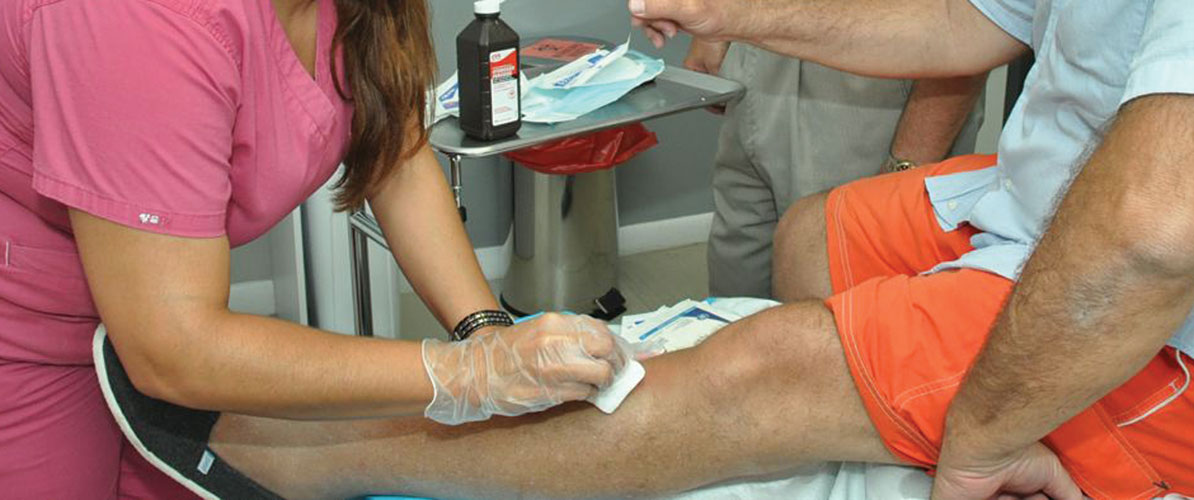How urgent are urgent care facilities?

Urgent care facilities that offer walk-in care for everything from scraped knees to diagnostic tests are a hit with consumers, but one major hospital system hopes a contrarian move will pay off for the institution and its patients.
With 17 urgent-care facilities and 14 diagnostic centers from Pinecrest to Coral Springs, Baptist Health South Florida took the field early and shows no signs of slowing down.
“Our urgent care and diagnostic centers help our community get the care they need quickly and close to home, drastically decreasing ER [emergency room] visits and hospital stays,” said Patricia Rosello, CEO of Baptist Outpatient Services, a division of Baptist Health South Florida. “They’re designed to be convenient and accessible, with extended hours close to where our patients live. We know our patients value this, and we are continuing to grow these services in order to meet the needs of the communities we serve.”
On the public-sector side, Jackson Health Systems plans to open eight to 12 urgent care facilities in the next few years to fulfill one of the goals of the $830 million Jackson Miracle-Building Bond approved by voters in November 2013.
The hospital system has signed a $3 million long-term lease for a 4,025-square-foot site at the Shoppes at Arch Creek in North Miami, and is negotiating a lease for a similar space in Country Walk Plaza, 13707 SW 152nd St., according to a release.
“The industry as a whole is looking for ways to deliver care differently,” said Doug Wolfe, a healthcare attorney and shareholder at the Kozyak Tropin & Throckmorton law firm. “These urgent care centers are a driving force because it’s cheaper to go there than the emergency room.”
Many health plans are shifting more costs to the insured person, he added. “Patients now have a greater financial stake because of larger deductibles and co-pays. They’re more aware of costs and interested in getting what they want out of the healthcare system.”
Free-standing facilities that include diagnostic equipment offer a one-stop advantage over the traditional doctor’s office, and flexible hours, too, he said. “You don’t need to set an appointment, and we’re seeing a trend toward making it easier for people to get healthcare when and where they need it.”
“When you look at the growing presence of urgent care centers, you need to ask why,” said Steven Sonenreich, president and CEO at Mount Sinai Medical Center Miami Beach. “In our opinion, people want access to primary-care medicine, so we’re developing the strongest primary-care network in the market.”
Over the next five to seven years, the system will build about 30 primary care centers, mostly outside of Miami Beach, where there is still a proliferation of primary care doctors, many of whom have their offices in two buildings on Mount Sinai’s campus, he said.
Many of the centers will offer extended and flexible hours to be more in line with people’s schedules, Mr. Sonenreich said.
The system has taken the position that primary care is better for the patient than having access to a free-standing clinic, where they may be seen only occasionally. “The most important thing is the relationship,” he said. “The best diagnostic tool has always been the history and physical, getting the patients to talk about themselves. It’s not all high-tech; it’s about what the physician can learn with his eyes, ears and hands. We think high-quality access to primary care is superior to what people can get at an urgent-care center.”
Nevertheless, there are times when medical need is literally urgent. Mount Sinai Medical Center Miami Beach has the only emergency department on the island and is in the midst of a major expansion.
The emergency department was built in 1972 to accommodate 25,000 cases annually, and is now seeing more than 50,000 visits per year, Mr. Sonenreich said. The new facility will have the capacity to serve 100,000 patients per year.
“We’re positioned for the future of Miami Beach, a tourist destination that receives 5 million visitors each year,” he said. “A first-class emergency department is a very important safety net for them and for our residents.”







Recent Comments